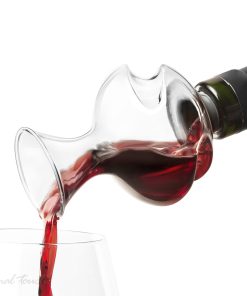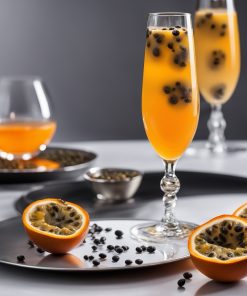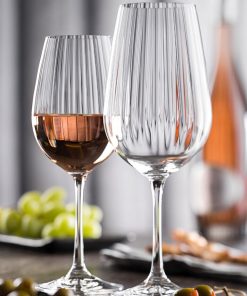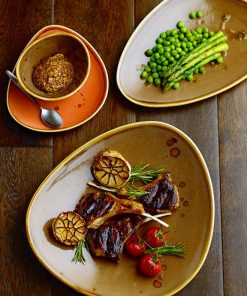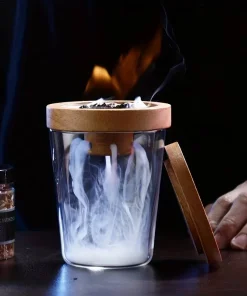Gin is an alcoholic beverage obtained by distilling fermented wheat and barley, on which a mixture of herbs, spices, plants, and roots, known as botanicals are macerated. Among these are juniper berries that characterize the scent and the taste. The name of the distillate comes from the names of juniper plants that produce berries.
Drawing attention to the juniper, it must be said that it is a conifer that grows in a temperate cold climate, preferably mountainous. It is spread worldwide, and there are 65 different types. Among the producing countries in the world lies Italy, and it is here that somehow the birthplace of this wonderful product happens. It is known for its medicinal properties and is highly appreciated in cocktails.
History
It is worth mentioning that juniper berries are actually fruits. These small, dark juniper fruits contributed not only to the name or the scent but were also used because their beneficial qualities were very high, especially diuretics, along with the other ingredients called botanicals.
The primitives ate their fruits; the Egyptians used them for embalming, and in the Middle Ages, people knew their healing powers for stomach pain. The Greeks used juniper berries in many of their Olympic events because they believed that the berries increased physical stamina.
In Italy, and to be more precise in the south, in Salerno, which had become known worldwide for its medicinal school, already in 1100 AD, the Salernitan medics were preparing a water with strong medicinal benefits, with the juniper berries that were grown in the hills around Salerno.
In Europe, the juniper berry gained more popularity starting in 1269. In the encyclopedic volume Der Naturen Bloeme Volkeren, Dr. Jacob Van Maerlant explained the beneficial effects of a decoction of juniper berries and wine used to treat cramps and stomach pains. A century later, Jan van Aalter described in another publication the inebriating effects of jenever.
During the 1665 outbreak of the Great Pest in London, a remedy known as ‘The Water of Pest’ was employed due to its medicinal properties. This remedy was created by blending a mixture of roots, seeds, and juniper berries.
The initial reference to the beverage known as “gin” can be traced back to Philippus Hermanni, a doctor from Anversa.
In his book A Constelijck Distileerboec from 1552, he mentions Aqua juniper 98 years before his Dutch colleague Franciscus Sylvius with his genoa, many of whom were considered the inventor of gin.
The person who received more notoriety for his gin distillation skills is Dr. Francisco Della Boe, better known as Franciscus Sylvius; he was a physician at the University of Leiden whose intent was to find a remedy to treat the Dutch soldiers who fell ill with East Indies fever.
Thanks also to successful colonies in Asia, America, and Africa, he had the chance to use exotic ingredients to create his medicinal marvel that was consumed more for pleasure. Originally it was obtained from the distillation of malt wine, with an alcoholic content of 50%, and since the spirit thus obtained was not so much aided by its raw taste of the distillation, herbs, spices, and roots were used to mask its profile.
At the same time, these aromatic dark juniper berries were also added, which also gave the name: from the Dutch genever meaning gin.
From 1568 to 1648, which was also referred to as the Eighty Years War, the British actively supported the Dutch in their fight for independence against Spanish rulers.
During this specific timeframe, the Dutch military introduced English soldiers to ‘Dutch courage,’ which they consumed like a magical potion to gain an advantage over their adversaries. A little like Asterix did before facing the Romans.
After the war ended, upon their return to Britain, the British soldiers carried back this “Dutch courage,” continuing to consume it and making it known.
Gin became increasingly popular in England, reaching its highest production point in 1690 when William of Orange banned the import of foreign distillates, particularly the cognac of the French, who were considered strong enemies. This Prohibition encouraged the utilization of excess cereals for the production of alcohol, specifically for gin distilleries.
The production became so crucial that this beverage was even used as part of workers’ salaries. The repercussions were significant, particularly regarding social impact, causing a rise in alcohol consumption among the lower class and leading to noteworthy implications for public safety and security.
This beverage, at that time, was considered the drink of the poor was carrying a bad name, and William Hogarth, in his Gin Lane (painting of 1751), shows the negative reputation created by the consumption of gin next to the state of well-being created by the consumption of beer.
The reason was also that gin was cheap, even cheaper than beer. There was a famous advertiser:” Drunk for a penny, death drunk for twopence, clean straw for nothing. “
In that very year, the British Parliament devised a plan to curb the excessive usage of gin by closing down small gin shops and regulating home production by implementing the Gin Act.
A big mistake occurred because the Gin Act only mentioned the word ‘gin,’ leading people to create it under alternative names such as Parlament Brandy and Zero Errors.
The British government, under the leadership of Prime Minister Robert Walpole, attempted to address these issues by implementing a range of strategies. These included increasing the distillation fee to £50 to decrease its popularity compared to more affordable alternatives. This action did not achieve the desired outcomes; it did have the opposite, similar to what happened in the US with the Prohibition promoting illegal production and imports.
The “Gin Act” was abolished in 1742, and even if it did not achieve its purpose, it had the merit of increasing the quality of the finished product.
One important role was played by the introduction of the continuous still in the 1830s, which removed many of the harmful impurities. In the meantime, a lot of new exotic botanicals were used, so a more aromatic style was created, leaving slowly in the dark, the Old Tom style (a particular style of gin that used a high quantity of sugar in order to mask the bad taste of the gin due to its poor production technique and ingredients).
Gin production
To produce gin, the first step is to obtain a neutral spirit which will later be combined with botanicals. Typically, the production begins with fermenting cereals, although grapes, potatoes, or molasses have become popular alternatives nowadays.
Regarding cereals, the process involves grinding the chosen grains and then submerging them in high-temperature water. Fermentation commences after this step is completed. This procedure closely resembles the one employed in the making of beer.
The fermented is distilled with the continuous alembic, obtaining pure alcohol at 96%, and then goes to the next stage, which is being aromatized by using selected botanicals. The actual preparation of the gin consists of a solution of water, alcohol, juniper berries, and other aromatic substances placed in the alembic, let rest at a temperature of 40-50 ° for several days, then proceed to the second distillation. With this second distillation, the ethyl alcohol, during its evaporation, drags the aromatic components of the botanicals.
The heads and tails of the distillate are eliminated, and only the purest part of the spirit, known as the hearts, is collected. The finished product is bottled for immediate release unless the distiller decides to age it.
Types of gin
London Dry gin doesn’t have to be distilled in London. Take the name because it was created following its London dry style. It normally has between 7 and 15 botanicals, with the juniper being the main character.
It is obtained in traditional alembic by redistilling ethyl alcohol in the presence of all the flavoring substances used. The flavoring substances must be all-natural, and no artificial substances can be added. The only element that can be added is the water. The abv must be at least 37.5% for the London dry style (and all other categories).
Plymouth gin has a long history since Thomas Coates of the Black Friars Distillery in Plymouth developed the world’s first dry-style gin in 1793, and it is still produced in the oldest distillery in operation. Plymouth gin, with its characteristic aroma, has been synonymous with cocktails since 1896 as it was used in the original Dry Martini but also cited by many other recipes of that time.
It is made to “similar” specifications as London Dry gin but may be made only in the south of England in Plymouth. As a style is less dry than the London style, and the juniper profile is lower than the London style.
Did you know that…
When Britain went to war with Napoleon Bonaparte in 1803, the Royal Navy, Lord Admiral Horatio Nelson, ordered a barrel of Coate’s gin to supply his officers with their daily ratio.
Old Tom is a historic style with no legal or geographical protection. It is the missing link between the London Dry Gin and Genever. It is sweet because when gin production started, it was common to add herbs and sugar to mask the imperfection and make it more palatable. When the gin production improved, these imperfections were slowly eliminated. Still, having gained a taste for its sweet taste, sugar continued to be added.
Most likely, its name comes from the first automatic beverage dispensing machine that some English pubs had installed externally in 1700. It seems that the passers, after depositing a penny in the cat’s mouth, were served by the bartender a shot of gin through a tube directly into the mouth of the customer.
Sloe gin is a liqueur with a gin base, and the taste is similar to a fruit cordial.
Genever
The Dutch precursor to gin is aged in characteristic terracotta bottles with its taste malty, almost like a young whiskey, and with less juniper flavor.
To obtain this style of gin, a mash of cereals is distilled into a spirit similar to whisky called mountain – malt wine. Then the mountain is mixed with another spirit (called Gebeide), a dry gin obtained through a distillation of botanicals that also includes the juniper berries.
The cereal used for the mountain is rye, corn, barley, and wheat. The cereal mash is first distilled in a pot still and then redistilled 2 or 3 times. The first spirit that comes out is called ruwna. The second is called enkelnat, and the 3rd bestnat, which means beer; the fourth is called korenwijn. The botanicals are the same as a London Dry style, but there is also present hop.
The types of genever are the following:
Graanjenever – genever made of botanicals. It is distilled 100% from grain, and the minimum bottling must be 35% abv.
Mountwijnjenever – malt wine at least 51 % in a genever.
Korenwijn – Corenwijn – corn wine at least 51% and 38% abv and max 20 gr sugar/liter may be added.
Oude/zeer oude genever (old genever) at least 15% wine malt and max 20 gr sugar per liter may be added. The name refers to the traditional style of genever. It doesn’t have to be aged, but if it does, have to stay at least 1 year-700 l Limousin barrel.
Jonge genever: max 15% malt wine; 37%a bv and max 10 gr sugar per liter.
New American or New Western
A relatively new style emerged in the 2000s in the US. This style aimed to put the accent on other botanicals rather than juniper to create a more “balanced” gin and more modern with adding also a touch of sugar.
Compound gin
There are no real laws governing how a compound gin must be made or what can or cannot be added after distillation. It is not redistilled, and flavorings are normally added to the neutral spirit. The flavorings may be natural or artificial, making it more a flavored vodka.
Bathtub gin
Bathtub gin refers to any type of homemade alcoholic beverage that emerged during the period when the United States had a ban on alcohol. Gin was preferred as it did not require an extended aging process like whiskey, allowing it to be ready for consumption in a short period of time.
The process involved soaking juniper berries and water in a large jar containing grain alcohol. Because the jar was too big to fit in a sink, it was filled using the bathtub tap.
During the Prohibition era, when grain alcohol was unavailable, denatured alcohol was often substituted. Unfortunately, this substitution resulted in numerous cases of illness, blindness, and even death. Despite botanical flavorings, bathtub gin was widely known for being excessively dry and having an unpleasant taste. Many modern cocktails were designed to disguise the taste of bathtub gin.
Most common botanicals
Juniper, the primary botanical in gin, is not only deemed essential but legally required to be present in any spirit aiming to be labeled as gin. The scent and flavor of juniper should ideally be the distinct characteristic of any gin, evident in its aroma and taste. The origin of the term gin can be traced back to the juniper plant. Its gastronomic, medicinal, and ritual benefits are what juniper is recognized for. The ancient Romans turned to juniper berries as an affordable alternative to the costly black pepper.
The term coriander is commonly used interchangeably with cilantro and Chinese parsley. Takes the name from the Greek word koros (insect) following the fact that (could be funny) have in common the same smell.
Since ancient times, this plant has been utilized for its healing properties and is originally found in regions of Southern Europe, North Africa, and Southwest Asia.
The primary constituents found in coriander seeds include linalool, alpha-pinene (also found in juniper), and gamma-terpinene, which contributes to its citrusy and lemon-like taste. For this reason, it is used in gin production.
Angelica, a plant that is known for its nomadic nature, is thought to originate from Syria. However, it is also found in the Nordics. It can be cultivated in countries such as France, Germany, Romania, and certain Asian nations. There are approximately 30 different types of this particular species, with certain varieties cultivated for flavor-enhancing properties. In contrast, others are grown primarily for medicinal uses.
Angelica can be found in Fernet, as well as vermouths and Chartreuse. The most frequently utilized component of angelica in gin production is its root. However, there are some cases in which certain gins opt to employ the seeds instead. Beefeater utilized both seeds and roots in their practices. The taste of angelica is occasionally confused with the flavor of juniper berries, even though they are distinctly different. It is considered the third major ingredient in the gin.
The lemon is an antique hybrid between pomelo and cedro.
It takes its name from the Persian word limu, which usually indicates citrus. The cultivation of this plant originated in China and later spread to Persia, Egypt, Iraq, and Europe. In the 10th century, thanks to the Arabs, it was introduced in Sicily, where it was initially cultivated for decorative purposes; this plant eventually gained recognition for its therapeutic properties and became highly valued. Dried lemon peel is a commonly utilized botanical ingredient due to its ability to enhance flavors without negatively impacting the product’s taste. Fresh lemon is not typically used due to the water and sugar content in fresh lemons, which can unfavorably alter the taste.
Orange
It is an antique hybrid, probably between pomelo and mandarin. Originally from Cina, it was imported into Europe by Portuguese sailors in the 14th century.
The peel is utilized in producing alcoholic beverages and soft drinks due to its pleasant aroma and taste.
Grapefruit is a mutant hybrid between the sweet orange and pomelo.
The gin industry commonly utilizes pink grapefruit peel. Still, Tanqueray No. 10 stands out by using the entire fruit in its production.
The fruit contains a high volume of water, vitamin C, and various antioxidants. This is a fruit that is typically found during the winter season. It is full of naringenin or naringin, a bitter flavonoid known for its antioxidant and cholesterol-lowering properties.
Cucumber
This climbing plant, originally from India, is popular in diets due to its lack of calories and high tartaric acid content. The presence of sulfur in it helps to make the skin smoother. It has been employed for its healing properties since ancient times, and to this day, it is a key ingredient in the making of popular gins.
Liquorice
The most important principle of licorice is glycyrrhizin, which has anti-inflammatory and antiviral properties.
The ancient Egyptians were already aware of the healing effects of licorice and were using it particularly to cure coughs.
Fennel can be categorized as a plant related to the carrot family. It is one of the most commonly consumed vegetables in the Mediterranean region.
Counteract the fermentation occurring in the intestine and reduce the production of intestinal gas. The seeds are used in the gin industry for their aromatic profile.
Orris
The origin of the name is rooted in the Greek term Iris which is translated as rainbow. It finds application in the perfume and cosmetic industries, with certain species’ roots being sought for their healing properties.
Cassia bark
This plant belongs to the Lauraceae family and is a fragrant tropical tree. Cassia is a relative of the true cinnamon of Sri Lanka and is often mis-sold as “cinnamon.” It has a slightly sweeter flavor compared to cinnamon. The Chinese herbalists used cassia bark already 5000 years ago as a remedy for fever and menstrual issues. It was also employed during the time of pharaohs in the mummification process.

